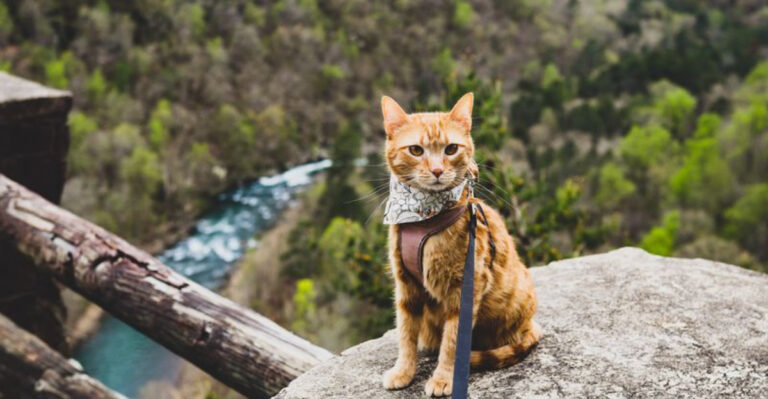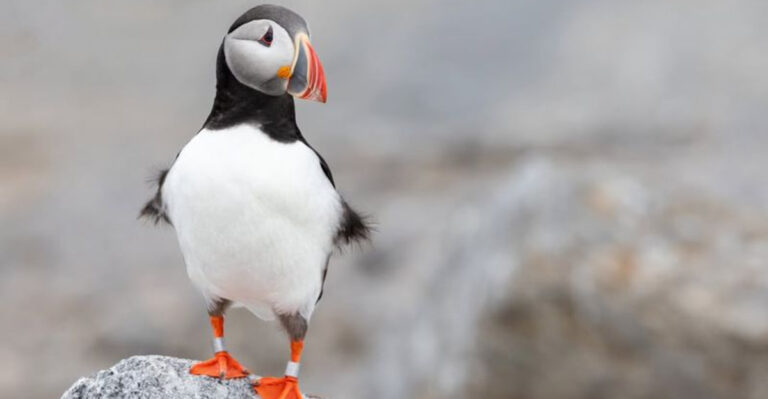12 Most Dangerous Creatures Commonly Found Lurking In American Homes
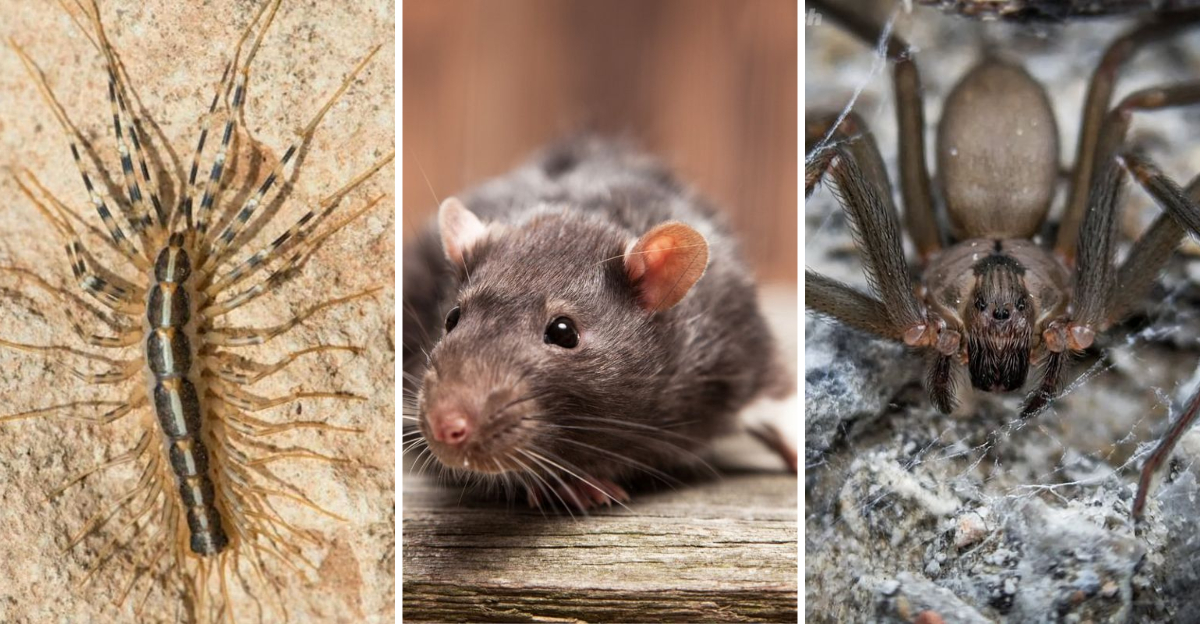
American homes, while cozy and inviting, often play host to a variety of unwelcome guests that can be more perilous than you’d expect. While many of these creatures are small and often unnoticed, their presence can pose significant dangers to the inhabitants.
From venomous spiders to sneaky rodents, these critters are not just an annoyance but a real threat lurking in the shadows of our homes.
In this list, we will explore of the most dangerous creatures that may be hiding in your home, offering you insights into their behaviors, risks, and how to manage them.
So, buckle up as we embark on a thrilling journey through the nooks and crannies of your home, unveiling the dangers that might be closer than you think!
1. Brown Recluse Spider
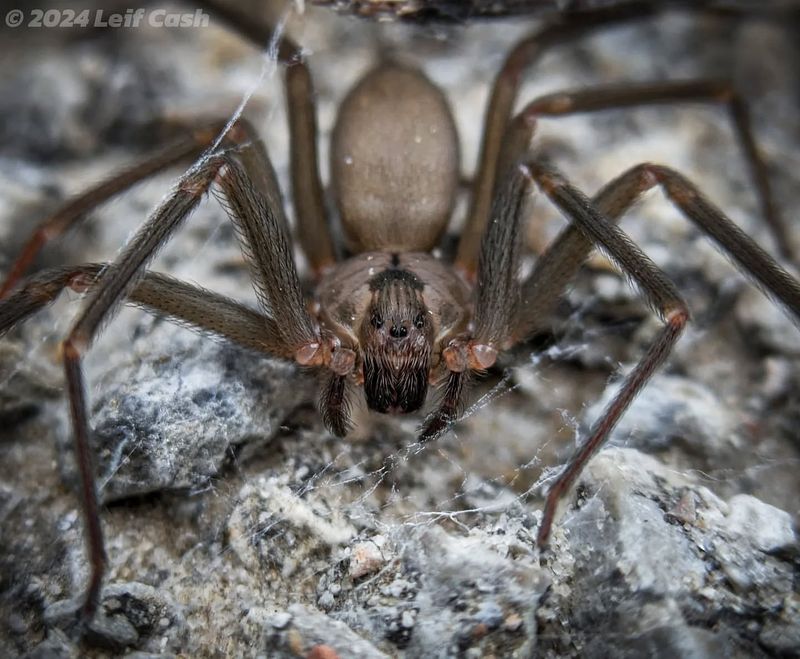
Lurking in the quiet corners, the Brown Recluse Spider is a master of disguise and danger. This venomous arachnid, with its distinctive violin-shaped mark, is often found in dark, undisturbed areas like closets, attics, and basements.
Though not aggressive, it will bite when threatened, causing severe reactions in some cases. Effects of its bite can range from mild skin irritation to severe necrosis, making it a creature to be wary of. Its nocturnal nature means you might never see it coming, adding to its insidious reputation.
Keeping clothes off the floor and ensuring storage areas are clutter-free can help reduce encounters. If bitten, seeking medical attention promptly is crucial. So, next time you reach into an old box or dark corner, remember the Brown Recluse might be closer than you think.
Stay vigilant and maintain a tidy home to keep these eight-legged intruders at bay.
2. Black Widow Spider
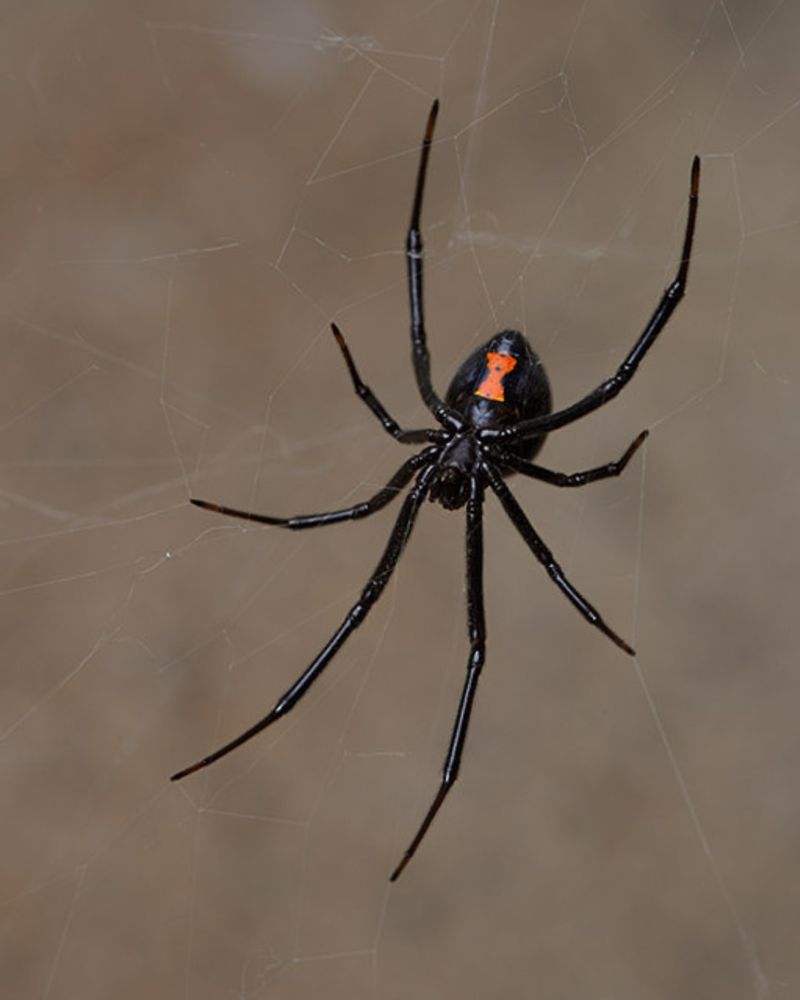
The Black Widow Spider, with its notorious red hourglass marking, is a creature that sends shivers down the spine. Found hanging in undisturbed areas like garages, sheds, and under furniture, these spiders are known for their potent venom.
While bites are rarely fatal to humans, they can cause severe pain, muscle cramps, and nausea. Their webs are often chaotic, and they prefer dark, secluded spots where they can hunt in peace. To reduce the risk of an encounter, keep areas well-lit and clutter-free.
Wearing gloves when moving items stored for long periods can also be a wise precaution. Despite their fearsome reputation, Black Widows are not aggressive and usually bite only in self-defense. Understanding their behavior and habitat can help you avoid unwanted interactions.
Keep a watchful eye in those dimly lit corners, as these spiders might be closer than you realize.
3. Rattlesnake
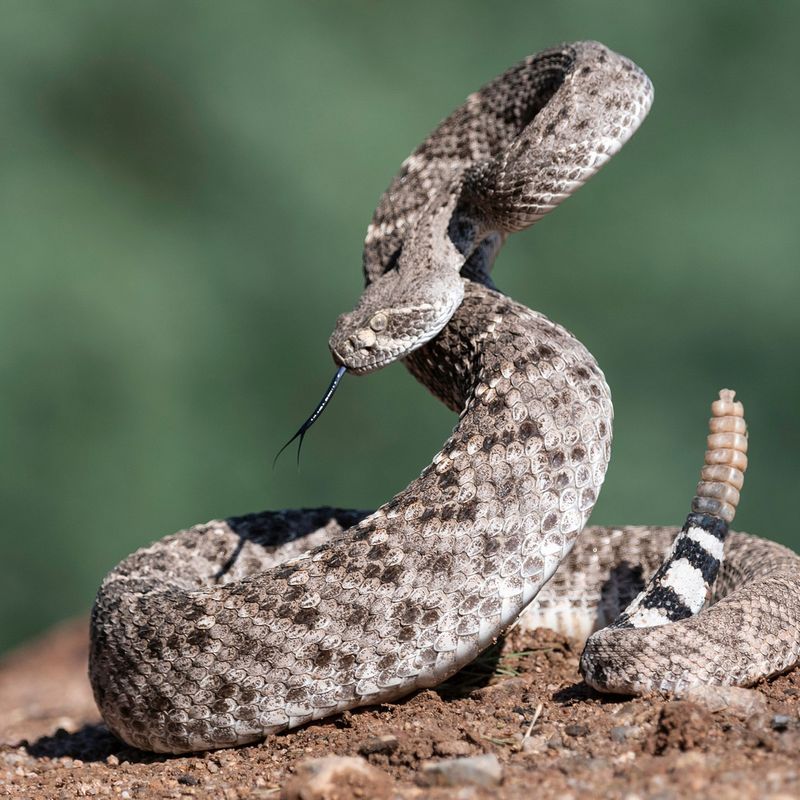
Rattlesnakes, with their iconic rattling tails, are a formidable presence in many American backyards. While they prefer open, arid environments, they can occasionally find their way into residential areas, especially those near their natural habitats.
Recognized by their distinctive rattle, these snakes use it as a warning sign when they feel threatened. Their venomous bite can cause serious harm, requiring immediate medical attention. Although not commonly found inside homes, they can hide in tall grass, wood piles, or under porches, making outdoor vigilance essential.
To minimize potential encounters, keep your yard tidy, remove debris, and be cautious when walking in areas where visibility is poor. Educating family members about the dangers and appearance of rattlesnakes can be a lifesaver.
Remember, these reptiles are more afraid of you than you are of them, but caution is always key when in their territory.
4. Fire Ants
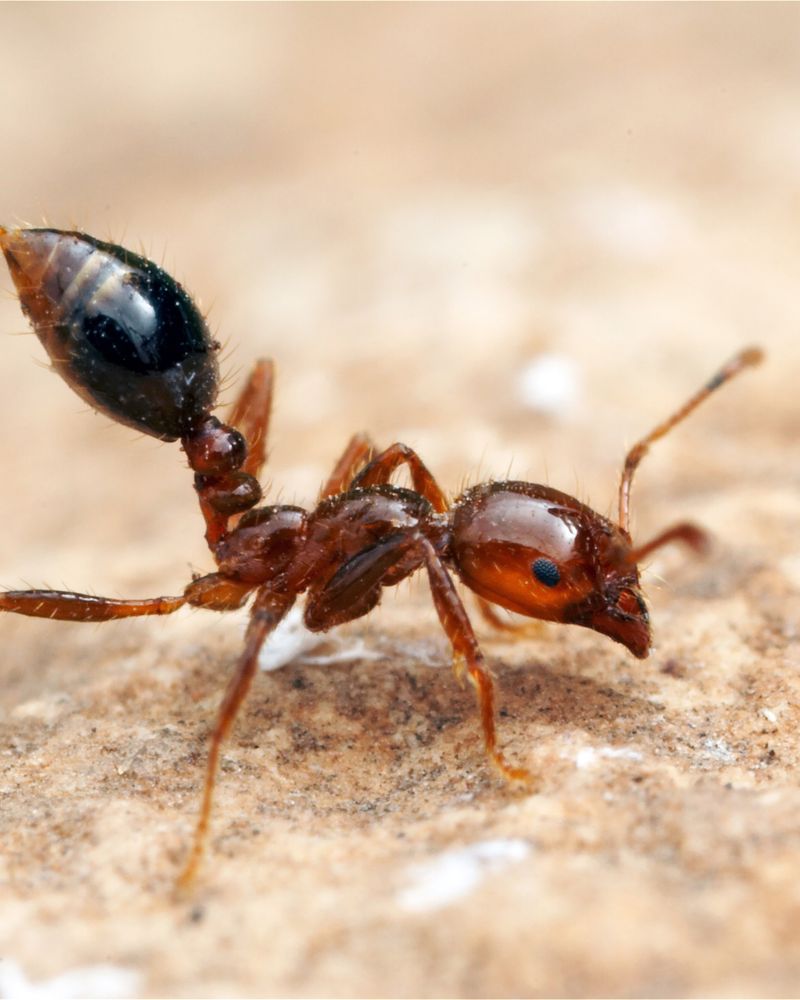
Fire Ants might be small, but their sting packs a punch that can leave you hopping with pain. These tiny invaders are notorious for their aggressive nature and painful stings, which can cause itching, swelling, and even allergic reactions in sensitive individuals.
They are often found in gardens, lawns, and sometimes indoors. These ants work in large colonies, and disturbing their nests can lead to multiple stings. They are attracted to food and moisture, making kitchens and pantries potential target areas inside homes.
To deter them, maintain cleanliness, seal food properly, and fix leaky faucets. Despite their fiery reputation, fire ants play a role in the ecosystem by aerating soil and controlling other pest populations. However, when they invade your space, they can become a formidable foe.
A proactive approach to home maintenance can keep these unwanted guests at bay and your feet sting-free.
5. American Cockroach
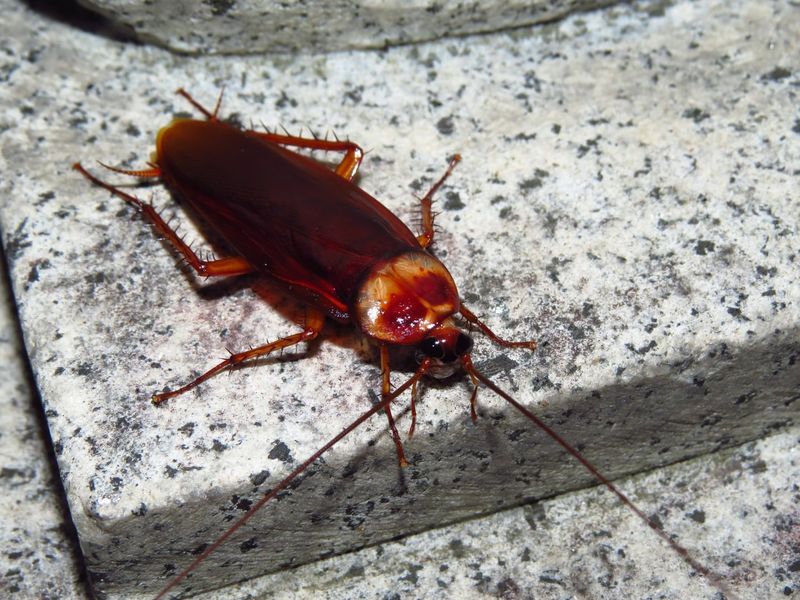
Often making an unexpected appearance in the middle of the night, the American Cockroach is not just a creepy crawler but a potential health hazard. Known for their speed and resilience, these roaches are attracted to warm, moist environments, often found in kitchens and bathrooms.
While they don’t bite, they can spread bacteria and allergens, leading to health issues, especially in those with respiratory problems. They thrive on crumbs and spills, so maintaining a clean environment is crucial in keeping them at bay.
These pests are notoriously difficult to eradicate once they’ve settled in, often requiring professional pest control services. It’s important to seal cracks and crevices and eliminate food sources to prevent infestations.
Though they might seem invincible, a well-maintained home can deter these nocturnal nuisances and help you sleep soundly.
6. Norway Rat

Norway Rats are uninvited guests that no homeowner wants. These rodents are known for their destructive chewing habits and can damage everything from wires to insulation, posing serious risks to home infrastructure.
Often found in basements and attics, they thrive in cluttered areas where food and nesting materials are accessible. Besides physical damage, they can also carry diseases, making them a health concern. Effective prevention includes sealing entry points and maintaining cleanliness.
Though they are resilient and resourceful, trapping and professional pest control are often necessary to manage infestations.
Educating family members on proper waste disposal and storage can go a long way in keeping these furry intruders at bay. Remember, where there’s one rat, there might be more lurking nearby.
7. Scorpion
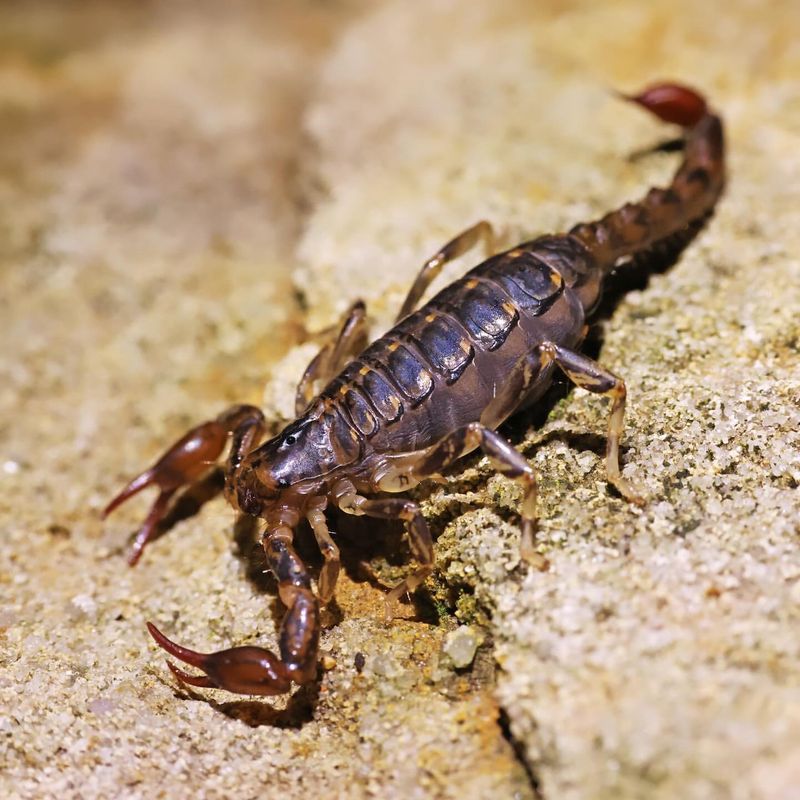
Scorpions bring a taste of the wild to American homes, particularly in the Southwest. Though most species are not lethal, their sting can be painful and cause allergic reactions in some individuals.
They prefer dark, cool environments and are often found hiding under rocks, in basements, or in shoes left outside. To avoid encounters, keep outdoor areas clear of debris and always shake out shoes and clothing before use.
Despite their fearsome appearance, scorpions are fascinating creatures that play a role in controlling pest populations. However, when they cross the threshold into human territory, caution is advised. A well-lit and tidy yard can reduce the chances of an unexpected scorpion encounter.
8. Wolf Spider
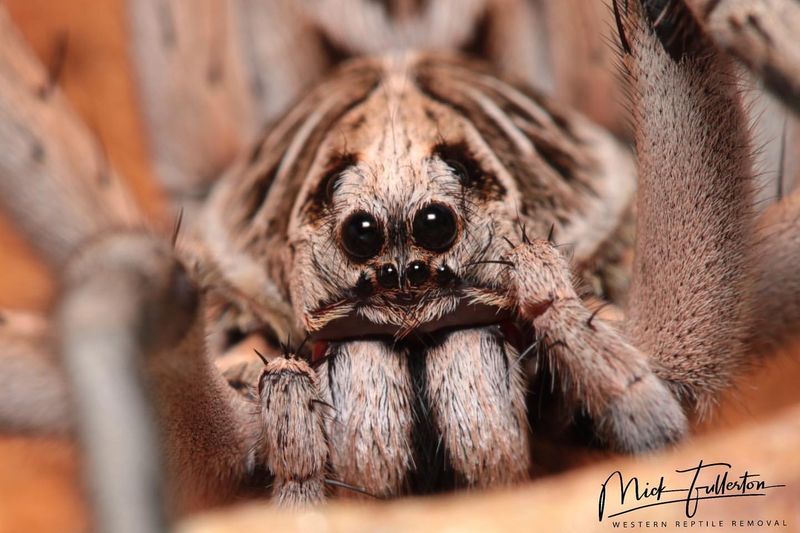
With their large, hairy bodies, Wolf Spiders are enough to send shivers down anyone’s spine. Unlike most spiders, they do not weave webs but hunt their prey on foot, making them formidable hunters.
Often found in basements and garages, these spiders can be intimidating but are not as dangerous as they appear. Their bite is venomous but typically only causes mild irritation unless you’re allergic.
Keeping areas clean and free of other insects can help deter these eight-legged hunters from setting up residence in your home. Despite their fearsome appearance, wolf spiders are beneficial in controlling other household pests.
However, if having them around is too creepy, sealing cracks and reducing clutter can help keep them at bay. Their surprising speed and agility make them fascinating yet unwanted house guests.
9. Bed Bugs
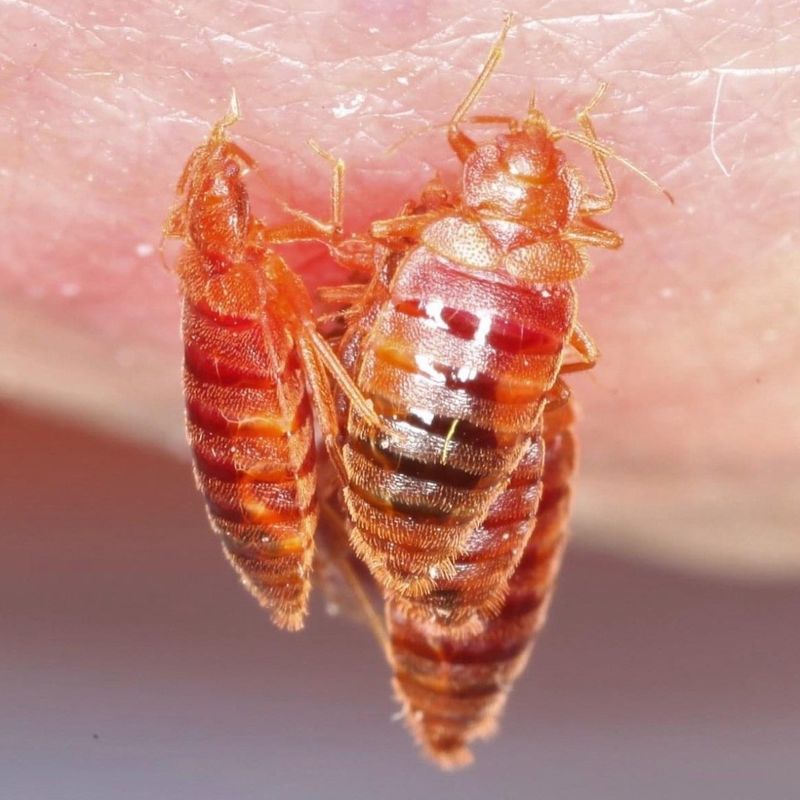
Bed Bugs, the uninvited guests that no one wants, are notorious for their stealthy habits and itchy bites. These tiny bloodsuckers can turn your restful slumber into a nightmare, thriving in mattresses, box springs, and upholstered furniture.
They hitchhike into homes via luggage, clothing, and even second-hand furniture. Identifying an infestation early is key, as they reproduce quickly and can be difficult to eradicate.
Signs include itchy bites, rust-colored spots on bedding, and a musty odor. Professional pest control is often necessary to completely eliminate these pests. Maintaining cleanliness and inspecting hotel rooms during travel can prevent bringing them home.
Remember, once bed bugs settle in, they are notoriously hard to evict, turning a peaceful bedroom into a battleground. Vigilance and prompt action are your best defenses against these nocturnal nuisances.
10. House Centipede
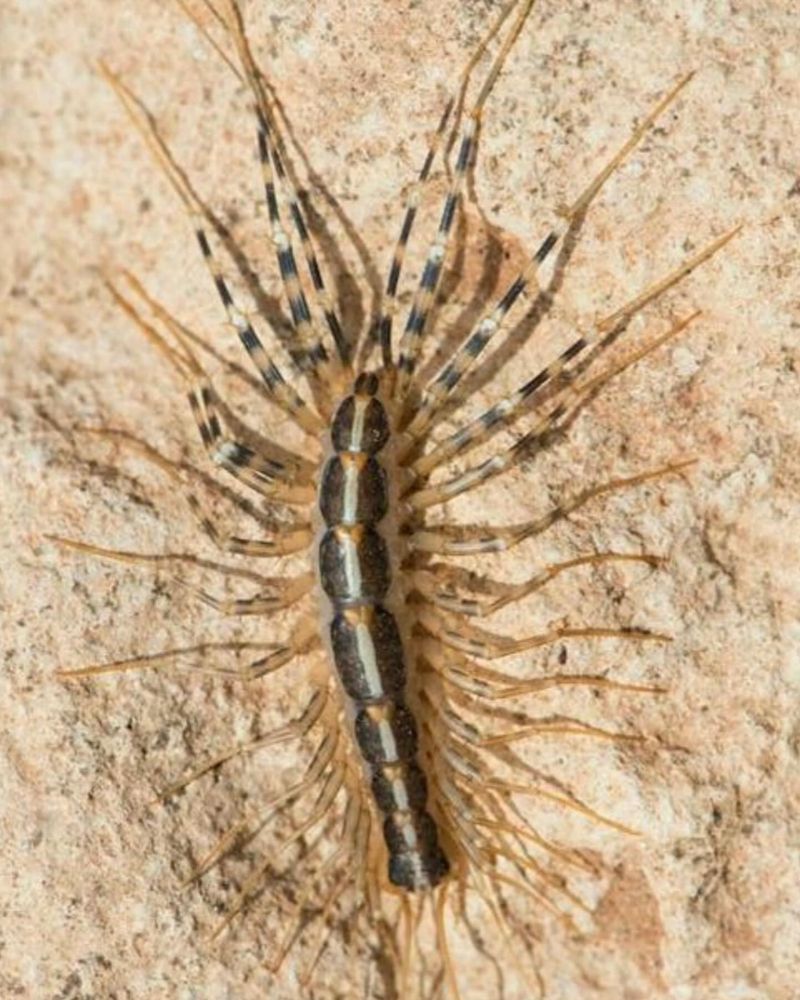
The House Centipede, with its multitude of legs and rapid movement, is a creature that often catches homeowners by surprise. Though their appearance is alarming, these critters are mostly harmless to humans and can even help control other pest populations indoors.
They thrive in damp areas like bathrooms and basements, where they hunt spiders, bed bugs, and other small insects. Their presence can indicate other pest problems, so a proactive approach to home maintenance can help keep them away.
Despite their beneficial role, their unsettling appearance makes them unwelcome in many homes. Keeping areas dry and sealing entry points can reduce their numbers indoors.
Remember, while they may seem like little nightmares, house centipedes are more friend than foe in the grand scheme of home ecosystems.
11. Mosquito

The tiny vampires of the insect world! These bugs are more than just a nuisance during summer evenings. Known for their itchy bites and potential to transmit diseases such as Zika, dengue, and West Nile virus, these pests can turn a relaxing evening outdoors into an itchy ordeal.
They breed in standing water, so eliminating breeding sites like clogged gutters and bird baths is crucial. Using screens and insect repellent can also help keep them at bay indoors. Despite their pesky presence, mosquitoes play a role in the food chain, serving as meals for birds and other insects.
However, their ability to spread disease makes them one of the most dangerous creatures you might encounter in your home environment. A vigilant approach to yard maintenance and personal protection can help keep these buzzing threats at bay.
12. Dust Mites
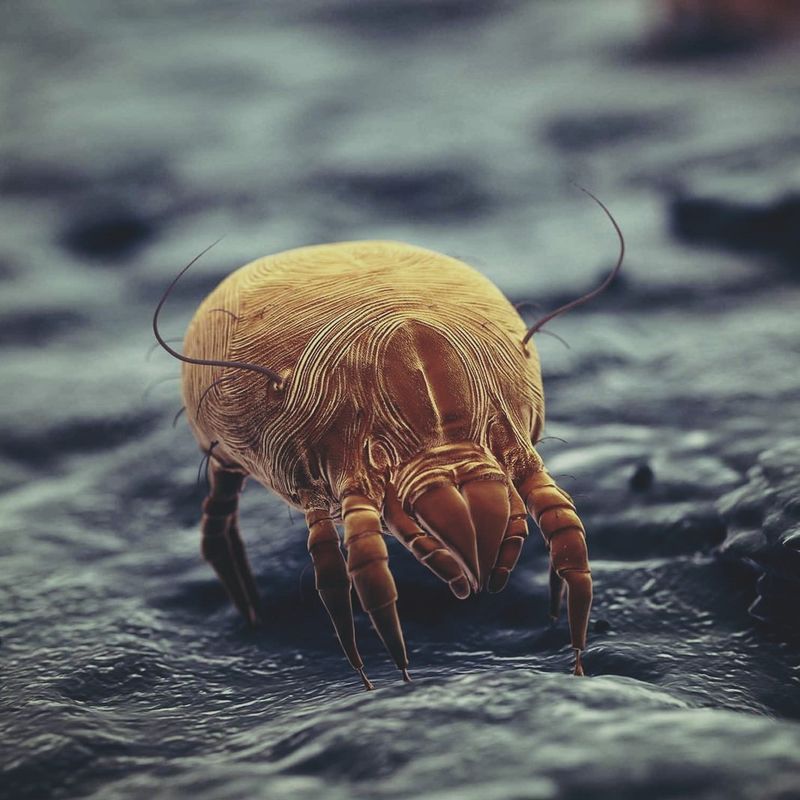
Dust Mites, invisible to the naked eye, are silent invaders in the comfort of our homes. These microscopic creatures thrive on flaky skin cells and are commonly found in bedding, carpets, and upholstered furniture.
Though they don’t bite, they are a common allergen, triggering asthma and allergic reactions in sensitive individuals. Controlling their population involves regular cleaning, such as vacuuming with HEPA filters, washing bedding in hot water, and using allergen-proof covers on mattresses and pillows.
Maintaining low humidity levels can also deter dust mites, as they thrive in moist environments. Despite their tiny size, dust mites can cause significant discomfort for allergy sufferers.
A proactive approach to home cleanliness can keep these microscopic menaces under control, ensuring a healthier living environment for you and your family. Remember, cleanliness is your best defense against these unseen allergens.



